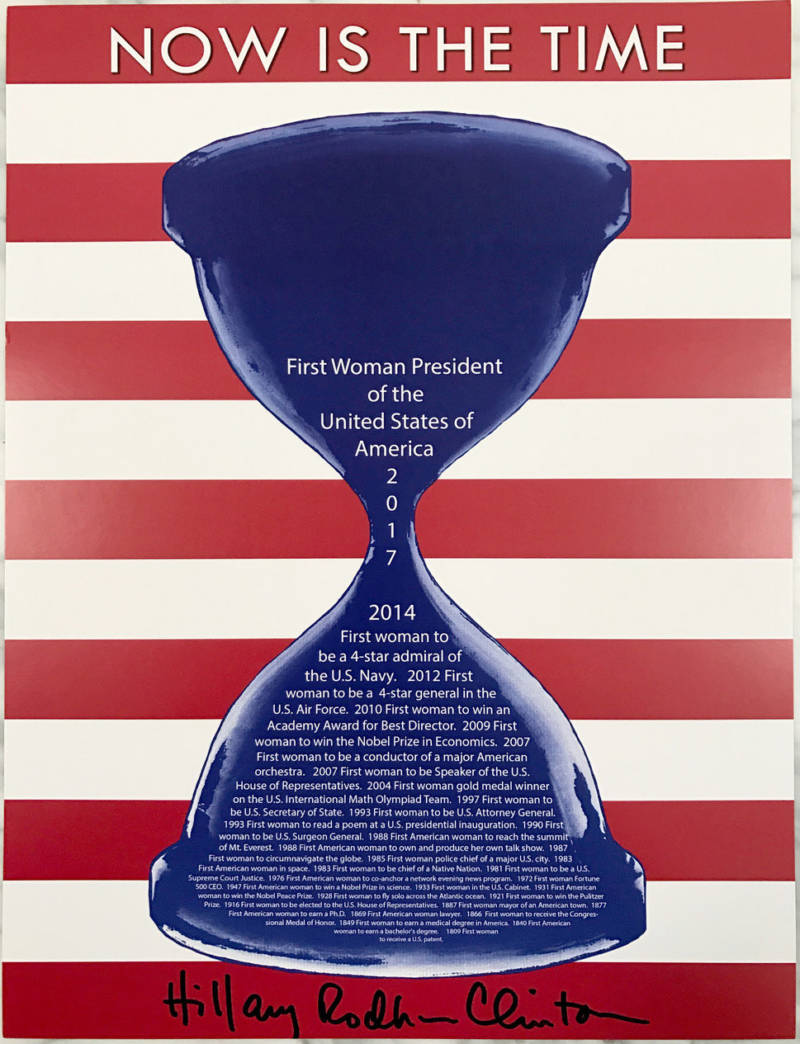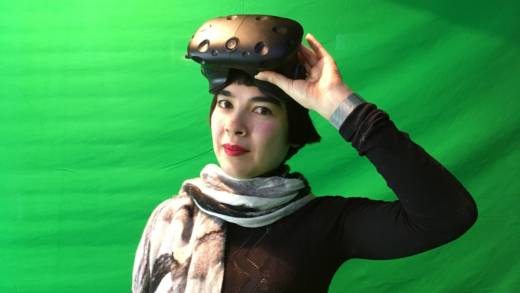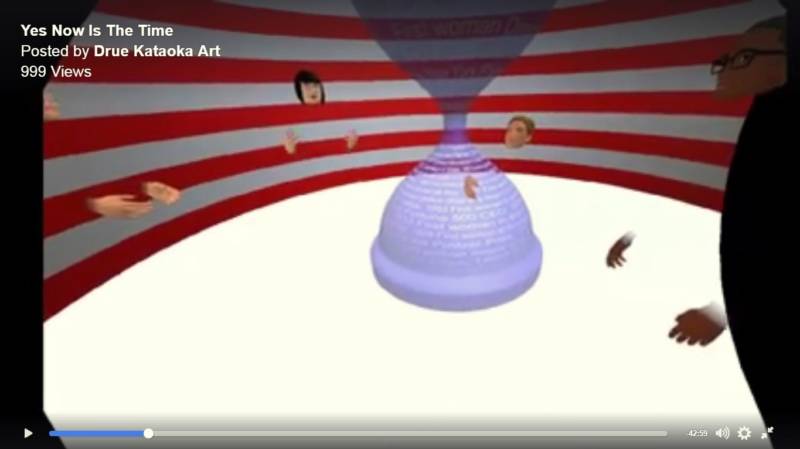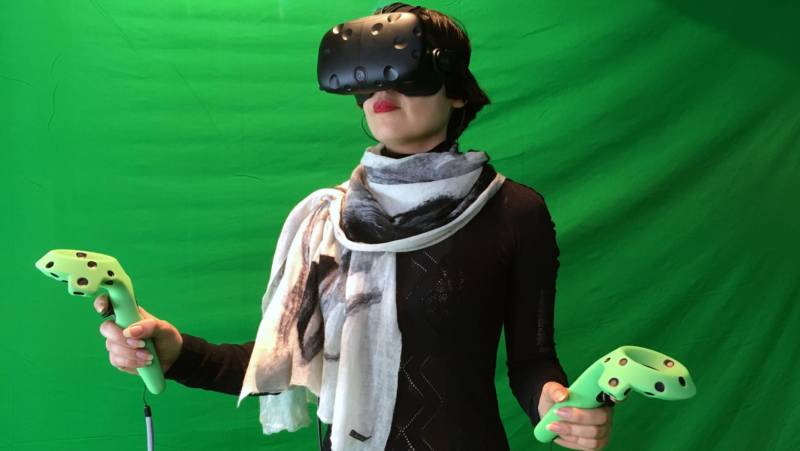Silicon Valley-based conceptual artist Drue Kataoka has a habit of placing herself at the visible edge of emerging technologies and using her position to talk about social issues.
Take Yes! Now Is The Time. It’s an interactive version of an originally two-dimensional poster created as a gift for Hillary Clinton’s recent presidential campaign. The bottom half of the hourglass details historic female “firsts.” The top half features firsts yet to happen (i.e. the first woman to go to Mars).
The Clinton campaign featured the poster at the Democratic National Convention (DNC) in Philadelphia. So many people came up to Kataoka at the DNC to share their firsts, she decided to make it possible for anybody to go to the website and add a first for herself, a friend or relative.

Now, Kataoka’s turned the poster into a virtual reality space people can explore or use as a backdrop for conversation — “a first-of-its-kind convergence of social VR and virtual reality art,” as she puts it. Kataoka unveiled the concept earlier this year with a virtual reality panel discussion on Facebook Live, featuring several women prominent in technology from Silicon Valley, Seattle and New York.
Virtual attendees included Kataoka’s co-host, Seattle-based entrepreneur Martina Welkhoff, as well as tech investor Frederique Dame, Microsoft software engineer Tammarrian Rogers, and Brooke Ellison, Director of Education and Ethics at the Stony Brook University Stem Cell Research Facility Center.




